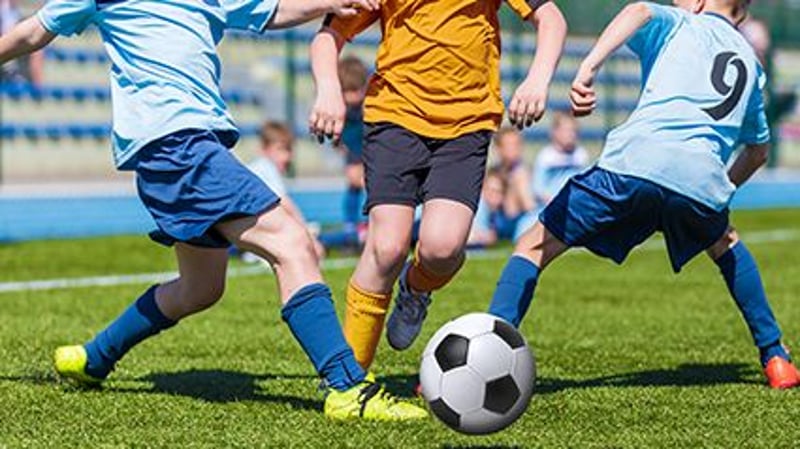Due to a recent change of our website, the process for submitting refill requests online has now changed.
Please click on “Sign Up Today!†to create a new account, and be sure to download our NEW Mobile app!
Thank you for your patience during this transition
Manténgase sano!

- Cara Murez
- Posted March 17, 2023
Dementia Risk Rises for Elite European Soccer Players
It's well-established that American football players can suffer significant brain impacts as they age.
Now, new research shows that elite European soccer players are also more likely than the average person to develop dementia.
Men in the Swedish top soccer division between 1924 and 2019 were 1.5 times more likely to develop neurodegenerative disease than those in a control group.
The study of more than 6,000 players found they had an increased risk of developing Alzheimer's disease and other dementias.
They did not, however, have any increased risk for motor neuron disease, such as amyotrophic lateral sclerosis (also known as ALS, or Lou Gehrig's disease). And they had even lower risk of Parkinson's disease than a control group matched by age, sex and region.
Unlike their outfield counterparts, goalkeepers did not have an increased risk of dementia. This supports the theory that heading the ball increases the risk, according to the report published March 16 in The Lancet Public Health.
"Goalkeepers rarely head the ball, unlike outfield players, but are exposed to similar environments and lifestyles during their [soccer] careers and perhaps also after retirement,"said Dr. Peter Ueda, an assistant professor at Karolinska Institute in Sweden.
"It has been hypothesized that repetitive mild head trauma sustained through heading the ball is the reason [soccer] players are at increased risk, and it could be that the difference in neurodegenerative disease risk between these two types of players supports this theory,"Ueda added in a journal news release.
About 9% of the elite Swedish soccer players were diagnosed with neurodegenerative disease compared to 6% of the control group, the investigators found. Most participants were still alive when data collection ended, so the lifetime risk for both groups is likely to be higher.
About 8% of the soccer players were diagnosed with Alzheimer's disease or other dementias compared to 5% of the control group, the researchers reported.
An earlier study from Scotland suggested that soccer players were 3.5 times more likely to develop neurodegenerative disease. This prompted moves to reduce heading in younger players for some European soccer organizations.
"While the risk increase in our study is slightly smaller than in the previous study from Scotland, it confirms that elite footballers have a greater risk of neurodegenerative disease later in life,"Ueda noted. "As there are growing calls from within the sport for greater measures to protect brain health, our study adds to the limited evidence-base and can be used to guide decisions on how to manage these risks."
Overall death rates during the study period were slightly lower among the elite soccer players compared to the control group, about 40% versus 42%.
The lower death rate among soccer players indicates that their overall health was better than that of the general population, likely because they are physically fit from playing, said Dr. Björn Pasternak, a senior researcher at Karolinska Institute.
"Physical activity is associated with a lower risk of dementia, so it could be hypothesized that the potential risks from head impacts are being somewhat offset by having good physical fitness," Pasternak said. "Good physical fitness may also be the reason behind the lower risk of Parkinson's disease."
The study authors said they were not certain whether the findings could be generalized to players today.
Most players in the study who were old enough to have developed one of these conditions played elite soccer during the mid-20th century, not recently.
Soccer has undergone changes since then that may affect the risk of neurodegenerative disease, such as switching from leather to synthetic balls. Leather balls soaked up water, making them heavier.
Style of play, training and equipment have also changed.
On the other hand, training and playing more intensely at younger ages, as is more common now, may increase risk. It's not certain whether the findings can be generalized to female elite players, amateur players or youth players.
More information
The American Association of Neurological Surgeons has more on sports-related head injury.
SOURCE: The Lancet Public Health, news release, March 16, 2023
